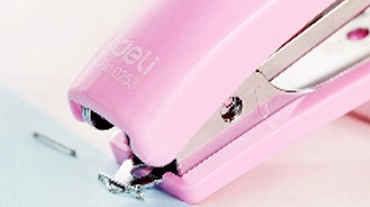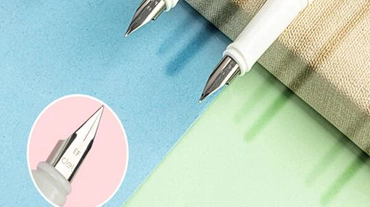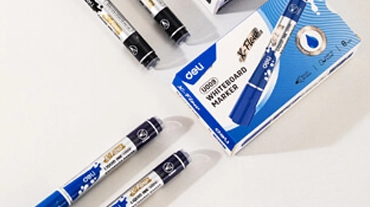One of the reasons children look forward to going back to school when they are young is that they can buy new stationery. Many people do not know that the seemingly ordinary stationery uses extraordinary technology.
The reason why ballpoint points can flow smoothly is that the small ball in the ballpoint point tip rolls under the frictional force with the paper during writing, thereby bringing out the ink in the pen core to form handwriting. Simply put, the structure of the ballpoint point tip is to embed a ball in the top of the ball seat so that the ball can rotate smoothly and does not easily fall out of the ball seat. However, such a simple design places high demands on the ball.
Firstly, to ensure a smooth writing experience, the fit between the ball and the ball seat is crucial. The gap between the ball and the ball seat is about 5 microns. If the gap is too small, the ink cannot flow smoothly. If the gap is too large, the ink may leak, and the ball may even fall off the pen tip.
Secondly, during writing, the gap between the ball in the pen tip and the paper will gradually increase due to continuous friction. Over time, ink is likely to leak from the gap, affecting writing.
In addition, the ballpoint ballpen tip has high processing and assembly precision. There are steps of uneven height and guiding ink grooves in the pen tip, and the processing precision of each ink guide groove requires 1 micron.
All of these factors place high demands on the material performance of the ball used in ballpoint points.
The material for making ballpoint ballpen balls has undergone continuous development. Earlier lead-tin brass and nickel-tin brass have been eliminated because of poor corrosion resistance. Currently, different specification materials including stainless steel balls, tungsten carbide balls, and ceramic balls are available for use. Among them, stainless steel has become the most commonly used material for ballpoint point tips.
The steel used for ballpoint points has a special name - pen tip steel. Pen tip steel needs to have corrosion resistance to resist the corrosion of solvents during long-term contact with ink. At the same time, to ensure that the gap between the ball and the ball seat is stable, pen tip steel also needs to have wear resistance. During the processing, a hard alloy drill is used with high speed, and the machining error cannot exceed 3 microns. This requires that pen tip steel has good machinability. At the same time, the machinability is also reflected in the need for fine chips, such as crushed chips and C-shaped chips, to make the waste chips easy to quickly detach from the workpiece, reduce surface scratches, and ensure the integrity of the complex structure inside the pen tip.
Ballpoint ballpen tip steel belongs to easy-to-cut stainless steel, which is a special steel material made by adding a certain amount of easy-to-cut elements such as sulfur, lead, and phosphorus to austenitic stainless steel. The working mechanism of the easy-to-cut element can be summarized as follows: the element and the inclusion formed can not only lubricate between the cutting tool and the steel material but also act as a stress concentration point to make the chips brittle.
The working methods of different elements are slightly different. For example, the dispersed spherical lead particles in the lead element can melt and be coated on the contact surface under the friction heat during cutting, playing a lubricating role. Meanwhile, sulfur can form MnS inclusions with the manganese elements in the steel, thereby blocking the continuity of the steel, resulting in small and easily removable chips. In addition, MnS can extend along the shear plane undercutting force, ultimately reducing frictional resistance. During the cutting process, the easy-to-cut element and its formed inclusions can lubricate between the cutting tool and the material.




